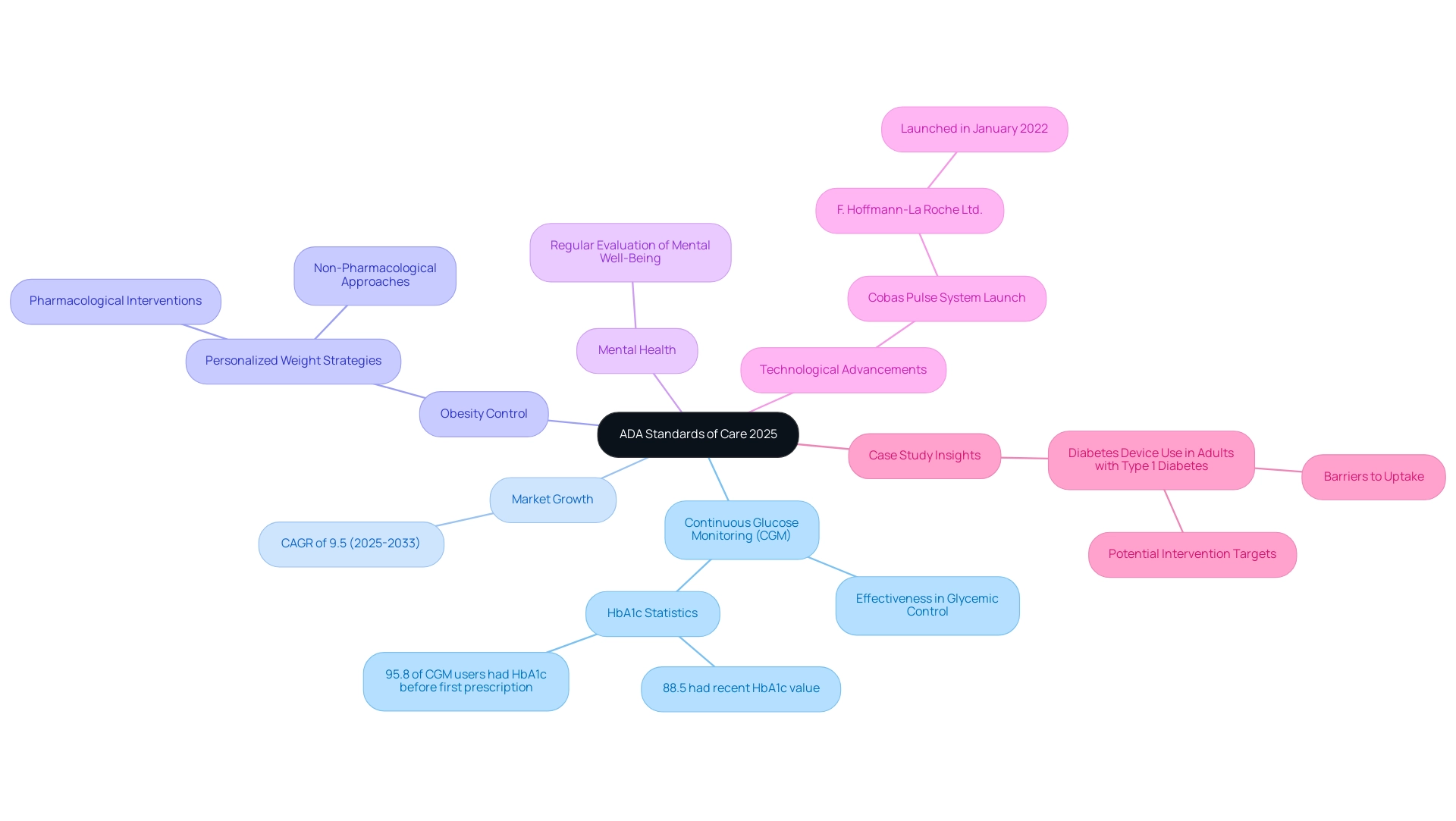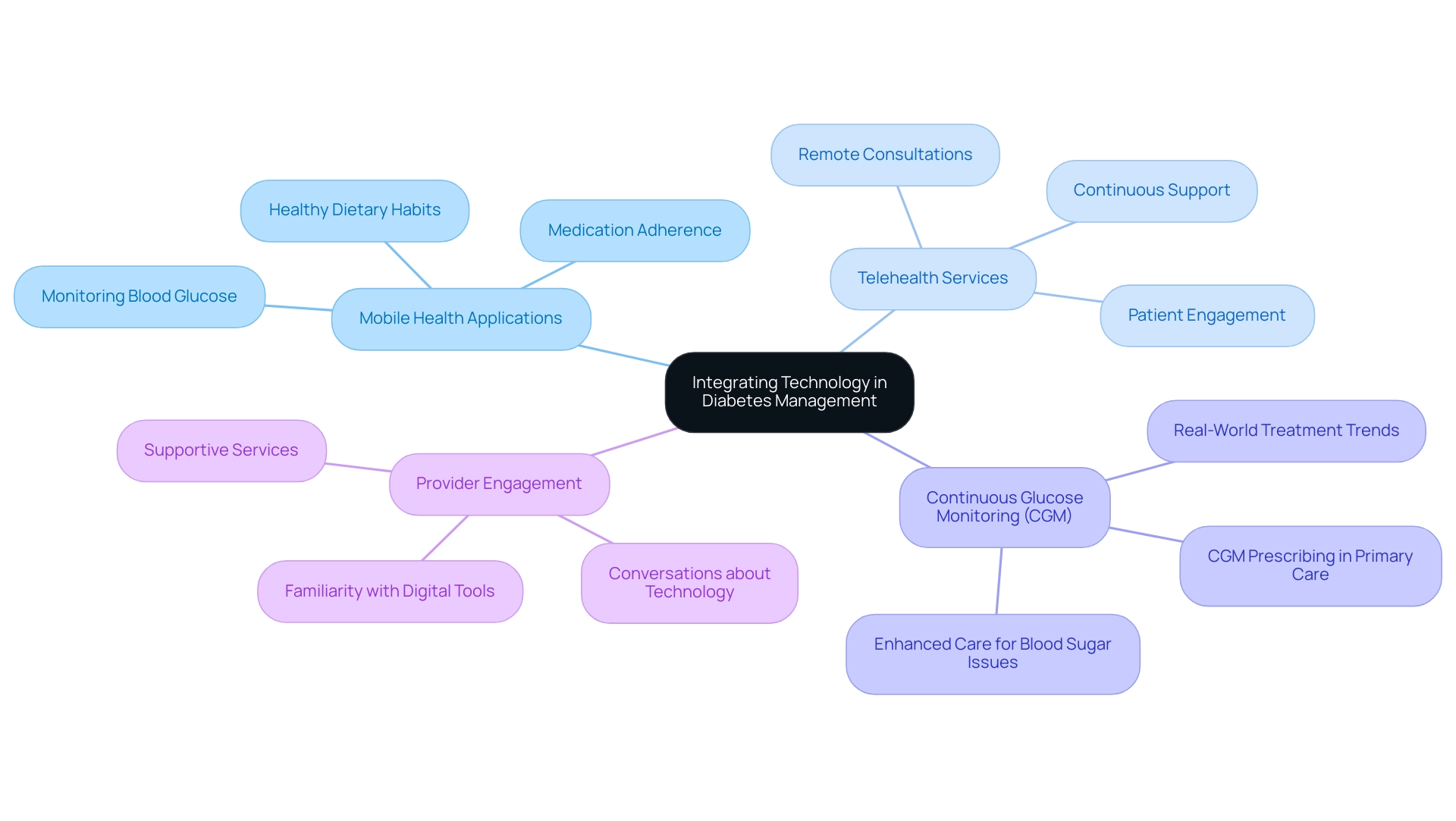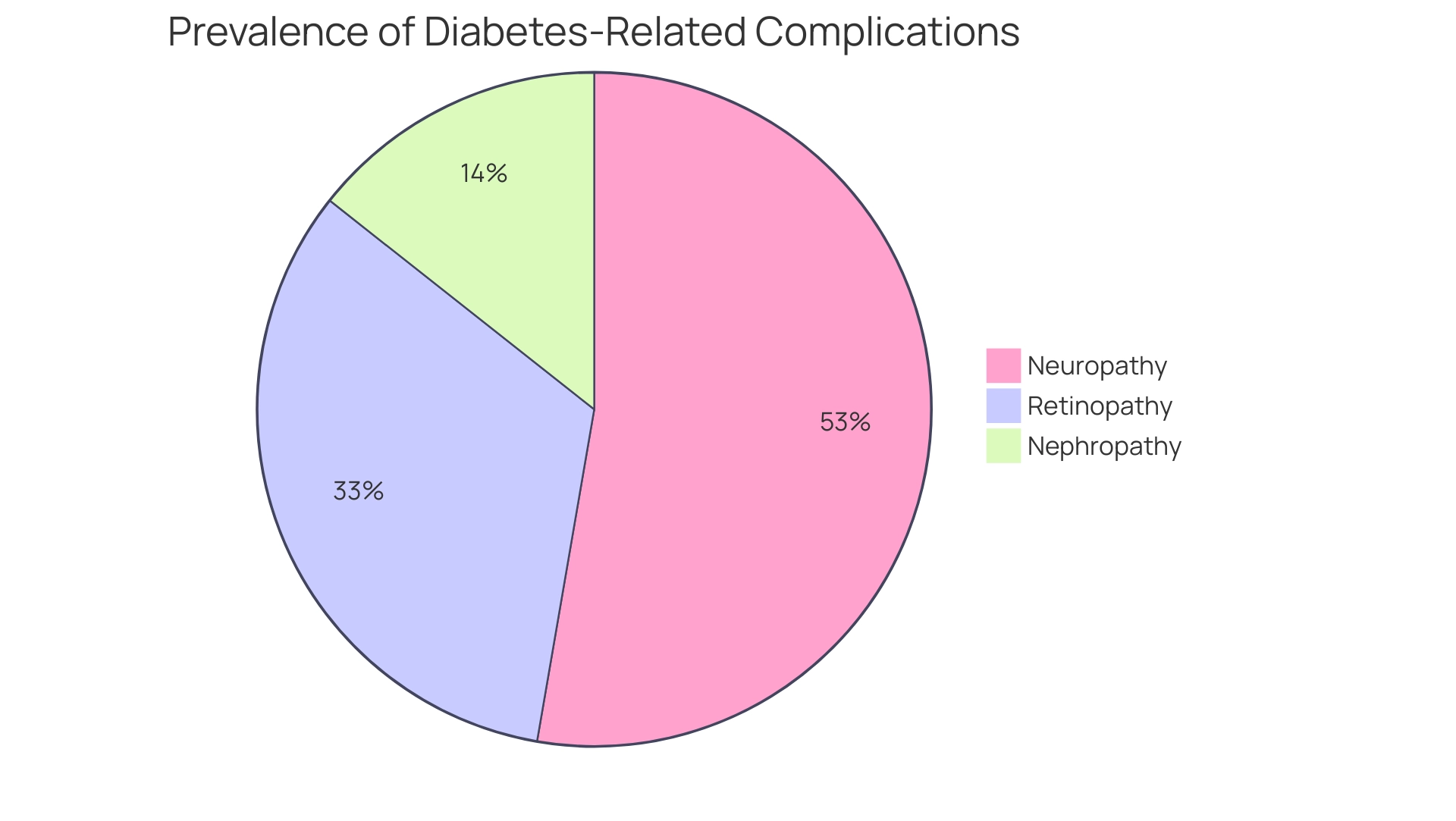Overview:
The main focus of the article titled "Understanding the ADA Standards of Care 2025: A Complete Tutorial for Healthcare Providers" is to provide an overview of the updated guidelines for managing diabetes care as established by the ADA in 2025. The article emphasizes a person-centered approach that integrates lifestyle modifications, technology, and continuous monitoring to improve patient outcomes, highlighting the importance of addressing comorbidities and enhancing healthcare provider education to optimize diabetes management.
Introduction
The 2025 ADA Standards of Care in Diabetes represent a significant advancement in the management of diabetes, offering comprehensive, evidence-based guidelines aimed at enhancing patient outcomes. These standards are designed to equip healthcare providers with the tools necessary to deliver individualized care, integrating lifestyle modifications, pharmacological treatments, and ongoing health monitoring.
Central to these recommendations is a patient-centered approach that prioritizes the unique preferences and goals of individuals living with diabetes, thereby fostering greater adherence to treatment plans. As the prevalence of diabetes continues to rise, with associated healthcare costs surging, the urgency for effective management strategies has never been more pressing.
This article delves into the critical updates introduced in the 2025 standards, the role of technology in diabetes care, and the importance of addressing comorbidities, all while emphasizing the need for continuous professional development among healthcare providers.
Overview of the 2025 ADA Standards of Care in Diabetes
The ADA Standards of Care 2025 provide evidence-based suggestions aimed at enhancing the quality of support for individuals living with diabetes. These guidelines act as an essential resource for healthcare professionals, facilitating informed choices concerning individual care based on the ADA Standards of Care 2025. They promote a comprehensive support model that includes:
- Lifestyle modifications
- Pharmacological interventions
- Continuous monitoring of health status
This approach addresses the complexities of comorbidities and psychosocial factors that can significantly influence diabetes management.
A key aspect of the ADA Standards of Care 2025 is their focus on a person-centered approach, which incorporates individual preferences and health goals into customized plans, thereby enhancing adherence and treatment results. Research indicates that patient-centered approaches can lead to improved glycemic control and overall quality of life for patients. With diabetes-related medical expenses per individual rising from $10,179 in 2012 to $12,022 in 2022, the need for effective management strategies becomes increasingly urgent.
As William R. Rowley from the Institute for Alternative Futures states, 'Aggressive efforts are urgently needed if we want to significantly reduce the epidemic of diabetes-related conditions by 2030.' The CDC's National Diabetes Prevention Program further supports these efforts by providing essential resources aimed at preventing this condition, reinforcing the importance of proactive management in combating this widespread health challenge. T2DSolutions is dedicated to enhancing care for Type 2 and Type 3 conditions through education, community support, and holistic treatment, offering a comprehensive resource hub for newly diagnosed individuals.
Additionally, recent statistics reveal that 39.5% of individuals have a non-HDL level of 130 mg/dL or higher, highlighting the urgency for effective management strategies. The significance of screening and public awareness is highlighted by the case study titled 'Screening and Awareness Initiatives,' which explores how new screening guidelines could greatly enhance the detection of undiagnosed conditions, aiding in tackling the escalating epidemic.

Key Updates and Revisions in the 2025 Standards
The ADA Standards of Care 2025 introduce pivotal updates emphasizing continuous glucose monitoring (CGM) as a fundamental aspect of care for individuals with both type 1 and type 2 blood sugar conditions. These guidelines advocate for the use of CGM as a standard practice for individuals undergoing intensive insulin therapy, underscoring its effectiveness in enhancing glycemic control and minimizing the occurrence of hypoglycemic events. Recent statistics indicate that 88.5% of individuals in the total group had a recent HbA1c value, with an impressive 95.8% of CGM users acquiring their HbA1c readings before their first CGM prescription, emphasizing the incorporation of CGM into regular condition oversight.
Additionally, the CGM market is expected to expand at a CAGR of 9.5% from 2025 to 2033, indicating its rising significance and acceptance in managing blood sugar conditions. The revised standards also tackle obesity control, promoting personalized weight strategies that combine pharmacological interventions with non-pharmacological approaches, thereby enhancing outcomes for individuals. Furthermore, there is a renewed focus on mental health within the treatment of blood sugar conditions, acknowledging its significant impact on overall control.
The guidelines suggest that healthcare providers regularly evaluate mental well-being as part of thorough care, aligning with current practices to ensure complete support for individuals managing their condition. Furthermore, advancements in glucose monitoring technology, such as the recent launch of the Cobas pulse system by F. Hoffmann-La Roche Ltd, exemplify the ongoing innovation in tools for handling the condition. Lastly, a case study titled 'Diabetes Device Use in Adults with Type 1 Diabetes: Barriers to Uptake and Potential Intervention Targets' highlights real-world challenges faced by individuals in adopting CGMs, offering insights into potential intervention strategies to enhance device uptake and improve health control.
While the ADA Standards of Care 2025 provide essential insights into care for blood sugar disorders, T2D Solutions seeks to utilize this information to improve education and community support for newly diagnosed individuals, ensuring they have access to the latest resources and guidance in managing their condition.

Integrating Technology in Diabetes Management
The ADA Standards of care 2025 advocate for healthcare providers to harness technology as a vital component in improving diabetes management. Central to this initiative is the use of mobile health applications, designed to assist individuals in monitoring blood glucose levels, adhering to medication schedules, and maintaining healthy dietary habits. Furthermore, telehealth services are emphasized, offering patients the convenience of remote consultations and continuous support, ultimately enhancing patient engagement and adherence to treatment plans.
Notably, longer duration of the condition has been associated with smaller reductions in HbA1c (β = 0.0147 per year), highlighting the critical need for timely interventions and the utilization of technology in management. As highlighted by Lindsay S. Mayberry from Vanderbilt University Medical Center, 'This study is the first to examine trends in CGM uptake among adults with type 2 conditions in real-world treatment settings, and findings reveal rapid increases driven by CGM prescribing in primary health.' This highlights the significance of continuous glucose monitoring (CGM) in enhancing care for those with blood sugar issues.
Healthcare providers are encouraged to become acquainted with the diverse array of digital tools available for diabetes management as outlined in the ADA Standards of Care 2025. Involving individuals in conversations about these technologies can help identify solutions that align with their individual lifestyles and preferences. Moreover, insights from the case study titled 'Implications for Future CGM Use' emphasize the need for expanded insurance coverage and increased awareness among primary providers.
By promoting such integration, providers can significantly enhance individual outcomes and overall care for those with the condition. T2DSolutions seeks to enhance these developments by providing educational materials and assistance designed for the ADA Standards of Care 2025, aiding individuals in navigating their health journey with the latest technological tools.

Patient-Centered Care and Shared Decision-Making
The ada standards of care 2025 underscore a person-centered approach to managing blood sugar, highlighting the essential role of collaborative decision-making between healthcare providers and individuals. This approach promotes active participant engagement in discussions regarding treatment options, preferences, and individual health goals. T2DSolutions aims to serve as a comprehensive resource hub for newly diagnosed patients, providing essential education and support to navigate their health journey.
Notably, 8.0% of U.S. adults aged 18 years or older with diagnosed diabetes had a non-HDL level of 190 mg/dL or higher, underscoring the management challenges faced by this population. It has been observed that higher patient-centered support (PCC) correlates with improved medication adherence and dietary behaviors, although it can sometimes present challenges related to glycemic control and physical quality of life. As noted by L.E.E., Principal Investigator, 'All authors approved the final article,' reinforcing the collaborative nature of this model.
By establishing an environment that enables individuals to participate in their treatment decisions, T2D Solutions can significantly improve adherence to treatment plans and overall health results. The examination from the case study named 'Individual-centered assistance for intricate cases involving type 2 illnesses' emphasizes the significance of customized strategies in effectively managing complex health scenarios. To facilitate this open dialogue, healthcare professionals are encouraged to employ motivational interviewing techniques and other effective communication strategies, ensuring that individuals' voices are both heard and respected in the decision-making process.
Such practices are not only essential for promoting a collaborative care environment but also serve as a basis for effective management of the condition in line with ada standards of care 2025.

Addressing Comorbidities in Diabetes Care
As we launch T2DSolutions, a new resource hub for Type 2 and Type 3 education and community support, it is crucial to highlight the ADA standards of care 2025, which emphasize the critical need for recognizing and effectively managing comorbidities in patients with the condition. Conditions such as hypertension, dyslipidemia, and depression are prevalent among individuals with blood sugar issues, often complicating treatment regimens. Recent statistics indicate that in 2020, there were approximately 51,000 hospital discharges for hypoglycemia among adults with this condition, highlighting the urgency for routine screening for these comorbidities.
Furthermore, changes in service utilization patterns due to the COVID-19 pandemic have significantly affected the management of blood sugar conditions, necessitating adaptations in treatment approaches. The guidelines also emphasize the importance of regular SARS-CoV-2 vaccinations for individuals with blood sugar issues, although the frequency of booster vaccines remains unclear. Developing comprehensive care plans that address both diabetes management and associated health conditions is imperative.
A notable case study titled 'Metabolic Score for Insulin Resistance and Mortality Prediction' illustrates how managing comorbidities can influence health outcomes, demonstrating that while the metabolic score can predict all-cause and cancer mortality, it does not show predictive capability for cardiovascular mortality. Healthcare providers are encouraged to collaborate with specialists when necessary and to adopt a holistic approach to individual health. This ensures that all aspects of a patient’s well-being are considered, ultimately enhancing treatment outcomes.
As noted by healthcare professional Sen Li, 'These findings carry substantial implications for the diagnosis, prevention, and treatment of diabetic complications.' Such collaborative and comprehensive strategies are essential for improving the management of this condition and its related comorbidities, aligning with the mission of T2D Solutions to provide valuable resources and support for those affected by this health issue.

Continuous Professional Development for Healthcare Providers
The ada standards of care 2025 emphasize the vital importance of ongoing professional development for healthcare providers managing chronic conditions. At A2D Solutions, we understand that regular involvement in workshops, conferences, and specialized training sessions is essential for keeping up with the latest developments in managing blood sugar. Our platform offers a variety of resources and support for ongoing education, including access to professional organizations and networks.
This dedication to ongoing education is especially crucial given that, according to recent findings:
- 30.1% of individuals with diabetes-related conditions experience neuropathy
- 18.8% have retinopathy
- 8.2% suffer from nephropathy
Significantly, data indicate that individuals who received education three times or more had improved glycemic control, underscoring the significance of ongoing learning. Moreover, insights from the American Diabetes Association Professional Practice Committee emphasize that effective education, including elements like sleep hygiene, can significantly enhance outcomes for individuals, in accordance with the ada standards of care 2025, by lowering A1C levels and insulin resistance in adults with type 2.
T2DSolutions is committed to empowering newly diagnosed individuals through innovative models of self-management education and support (DSMES), including virtual environments that can lead to greater weight loss while maintaining similar decreases in A1C compared to traditional methods. Additionally, recent news reveals that the age-adjusted percentage of adults aware of their prediabetes condition increased from 6.5% in 2005–2008 to 17.4% in 2017–2020, highlighting the growing awareness and importance of education in diabetes management. By remaining informed about new research, emerging technologies, and updated guidelines, healthcare providers can enhance their knowledge and skills, ultimately leading to improved patient care and health outcomes.
t2d solutions is here to support you on this journey.

Conclusion
The 2025 ADA Standards of Care in Diabetes mark a pivotal evolution in diabetes management, emphasizing a comprehensive, patient-centered approach that integrates lifestyle changes, technology, and ongoing health monitoring. These guidelines provide healthcare providers with essential tools to enhance patient outcomes, particularly through the adoption of continuous glucose monitoring (CGM) and personalized care strategies that address not only diabetes but also associated comorbidities.
By prioritizing shared decision-making, the standards encourage active patient engagement, ensuring that individual health goals and preferences are central to treatment plans. This collaborative approach has demonstrated a positive correlation with improved adherence and overall quality of life for those living with diabetes. Furthermore, the integration of technology, such as mobile health applications and telehealth services, offers innovative solutions that facilitate better management and support for patients.
As diabetes prevalence continues to rise, the urgency for effective management strategies cannot be overstated. The 2025 standards serve as a crucial resource for healthcare providers, underscoring the importance of continuous professional development to stay informed about advancements in care. By embracing these guidelines, healthcare professionals can significantly enhance their ability to support patients, ultimately contributing to improved health outcomes in the ongoing battle against diabetes.



